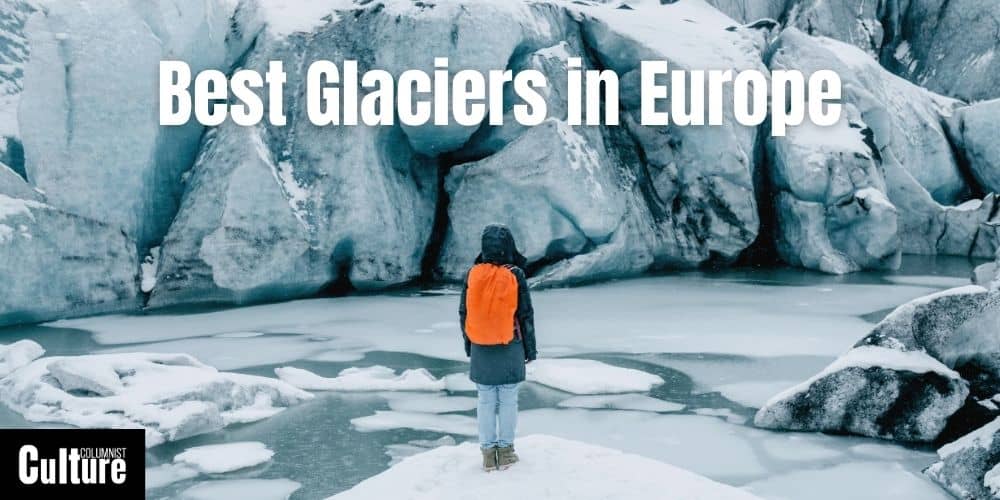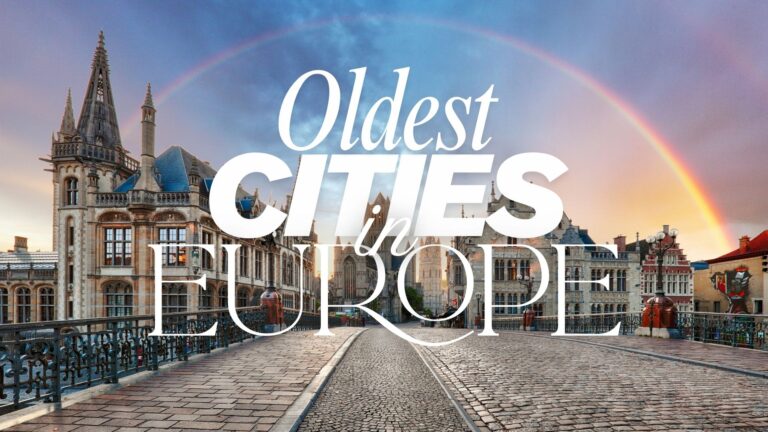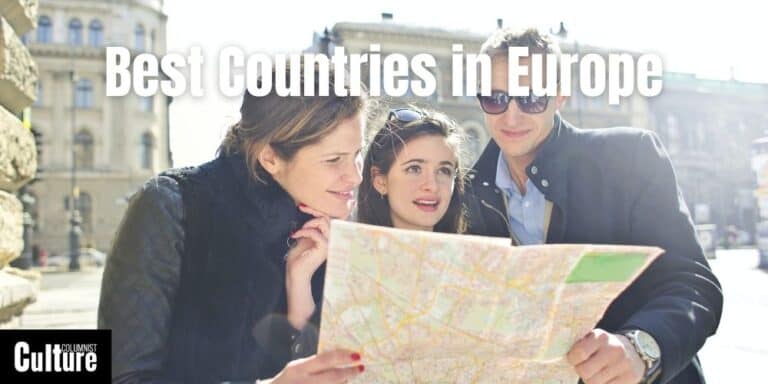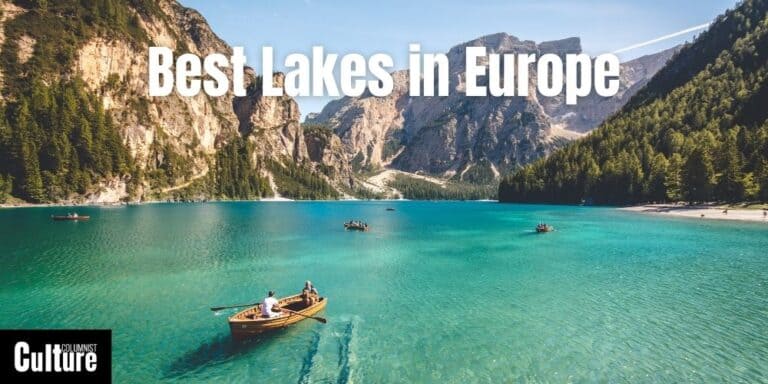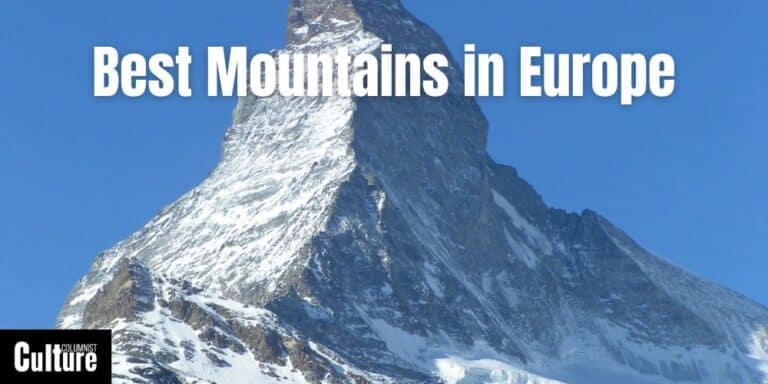Best Glaciers To Visit In Europe
Europe isn’t just about historic cities and Mediterranean coasts. Venture a little farther, and you’ll find yourself amid some of the most magnificent glaciers on the planet. These icy landscapes not only shaped our world for millions of years, but they also offer a glimpse of nature’s most spectacular creations.
Glaciers can be daunting destinations. Access can be a logistical challenge, and safety is paramount, especially for those unfamiliar with the terrain. For experienced climbers, the thrill might be in tackling the most challenging glaciers, while novices may be seeking something a bit more manageable.
Glacier tourism is growing in Europe, but it’s also subject to increasing environmental concerns. Some glaciers are more commercialized and have amenities like guided tours and visitor centers, while others are remote and require specialized equipment.
Whether you’re an adrenaline junkie, a nature lover, or simply curious, below you’ll find a curated list of the best glaciers in Europe that will suit a variety of needs and interests. Keep reading to find the icy expedition that’s perfect for you.
Jostedalsbreen, Norway

Jostedalsbreen in Norway is Europe’s largest glacier, covering 188 square miles. This glacier has numerous “arms” extending from the main ice cap, each with its own unique features and accessibility. Adventure seekers are allowed to walk on the glacier itself, while in winter, you can ski the surrounding snow resorts or go ice-skating on the glacier’s frozen lakes.
Vatnajökull, Iceland

Vatnajökull in Iceland is the largest glacier in terms of volume in Europe. It houses multiple active volcanoes under its ice, giving the island it’s reputation as the land of fire and ice. Tour operators offer hiking and ice climbing, but the glacier is best known for its ice caves, which you can enter and see from inside, with the most iconic being the Crystal or Anaconda ice cave.
Aletsch Glacier, Switzerland
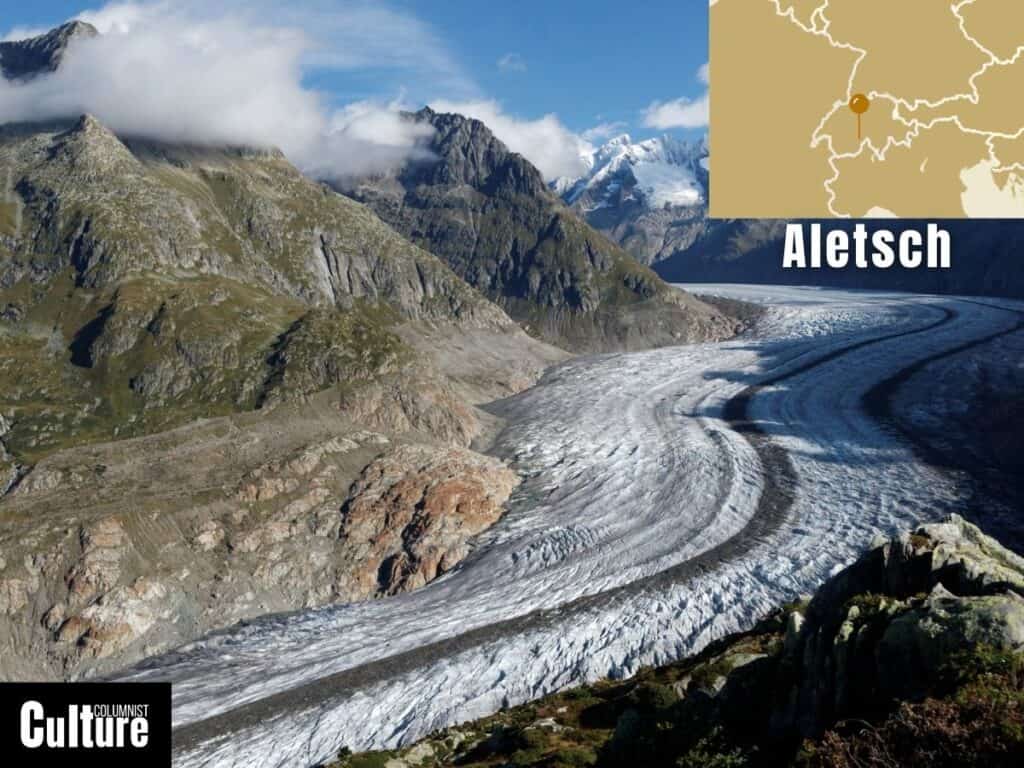
The Aletsch Glacier stretches across the Swiss Alps and is the longest glacier in Europe. It is a UNESCO World Heritage Site recognized for its biodiversity. A remarkable feature of Aletsch is its “ice rivers,” formed from compressed ancient snow that weaves like veins through the glacier. The surrounding Aletsch Arena allows you to ski on a total of 104 kilometers of ski slopes with views of the Aletsch Glacier.
Mer de Glace, France

Mer de Glace reigns as France’s largest glacier and part of the Mont Blanc massif. Flowing for about 7 km and 200m deep, the glacier is notable for its ice caves and tunnels, which are accessible by a cog railway. A small cable car allows visitors to descend from the train station onto the Mer de Glace glacier, where they can enter a man-made ice grotto that is cut into the glacier every summer.
Arolla and Mont Collon Glacier, Switzerland

The Arolla Glacier in the Swiss Pennine Alps is made of two glaciers: the Glacier du Mont Collon and the Haut Glacier d’Arolla. It’s known for its steep icefalls and close proximity to Arolla village. A glacier crossing with an experienced guide is one of the best ways to experience the landform, but the glacier’s once-iconic ice cave was destroyed by an earthquake in 2022 and is no longer safe for visitors.
Pasterze Glacier, Austria
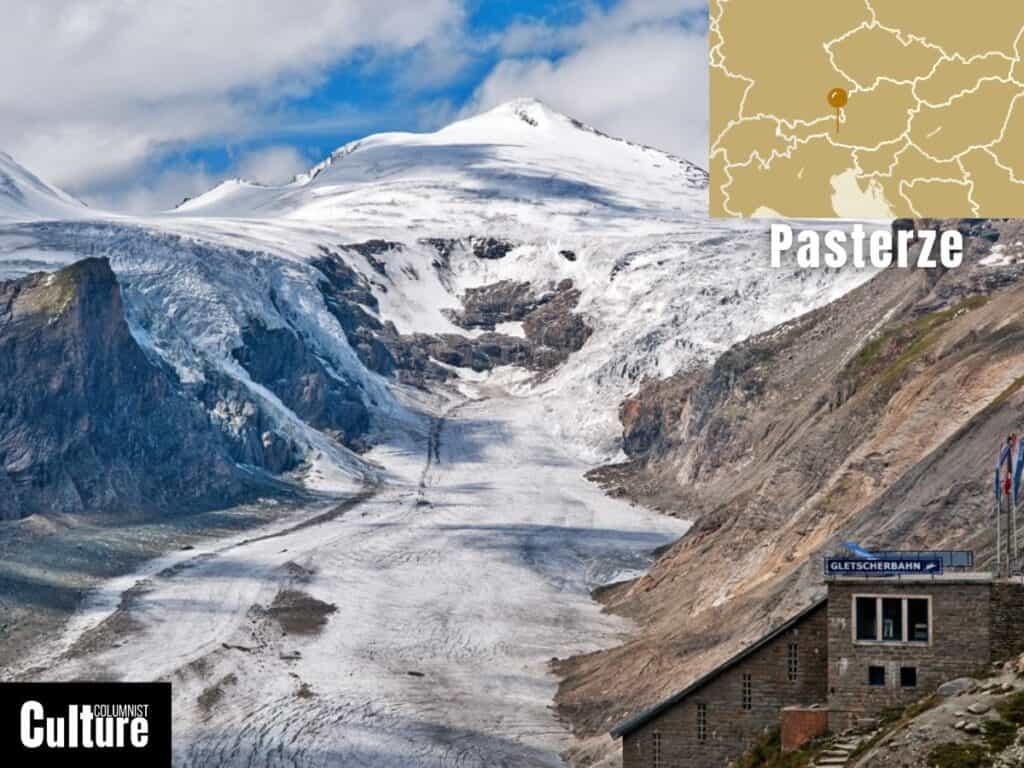
Pasterze Glacier is in the Austrian Alps and is the longest glacier in Austria and the Eastern Alps. Situated within Hohe Tauern National Park, the Pasterze is accessible via the Grossglockner High Alpine Road. While there is no skiing on the glacier, you can hike, which starts at Kaiser Franz Josefs Hohe, along the moraine (where the glacier retreats), and get right next to the glacier to see it up close.
Svartisen, Norway

Svartisen is Norway’s second-largest glacier and is located just 20 miles south of the Arctic Circle. The glacier is not easily accessible by road, but Engabreen, a glacier arm of Svartisen, stretches down to almost sea level, making it one of the most accessible parts. You can have great views of the glacier from the Brestua café by taking a boat trip across the fjord, or you can venture closer to the glacier by hiking or biking around Svartisvatnet lake.
Folgefonna, Norway
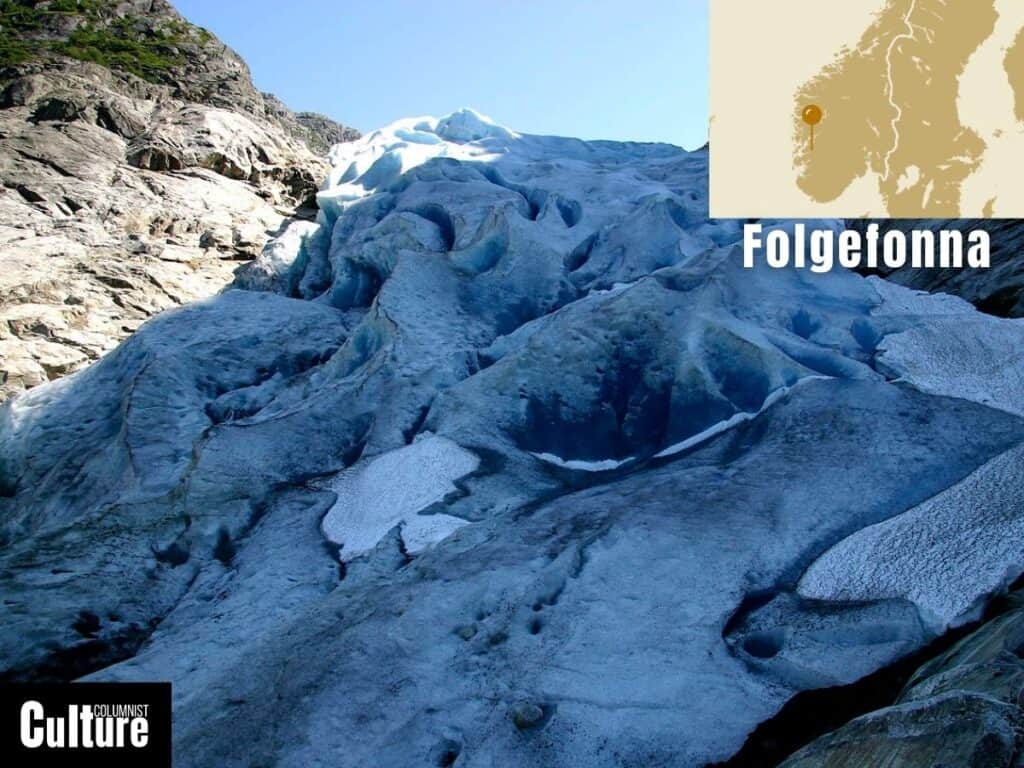
Folgefonna, in western Norway, is one of the largest glacier areas on the European continent. It is the heart of Folegonna National Park and consists of three separate ice caps. The glacier can be explored through various guided tours, including hiking, ice climbing, and kayaking. Folgefonna also has a summer ski center called the Fonna Glacier Ski Resort.
Brenva Glacier, Italy

Brenva Glacier is located on the south face of Mont Blanc in Italy. It descends for about 7 kilometers into the Aosta Valley and can be partially seen by the ski town of Entrèves. Rock avalanches have shaped the glacier and influenced its movement. Brenva Glacier poses challenging routes, and tours of the area are generally only for excellent skiers and alpinists.
Suldenferner, Italy

Suldenferner is located in Italy’s Ortler Alps and is known for its deep blue crevasses, carved by millennia of flowing ice. Its accessibility makes it a prime destination for guided glacial walks, allowing even novices to experience the thrill of setting foot on a glacier. Many treks include summitting Suldenspitze Peak, where you can see the glacier from above.
Gorner Glacier, Switzerland

Gorner Glacier is in the Swiss Alps and is one of Europe’s largest and most accessible ice streams. The glacier is unique for its multiple arms that converge, resembling a river system made entirely of ice. Visitors often take the Gornergrat Railway to get panoramic views of the glacier as well as the surrounding peaks, like the iconic Matterhorn.
Langjökull, Iceland
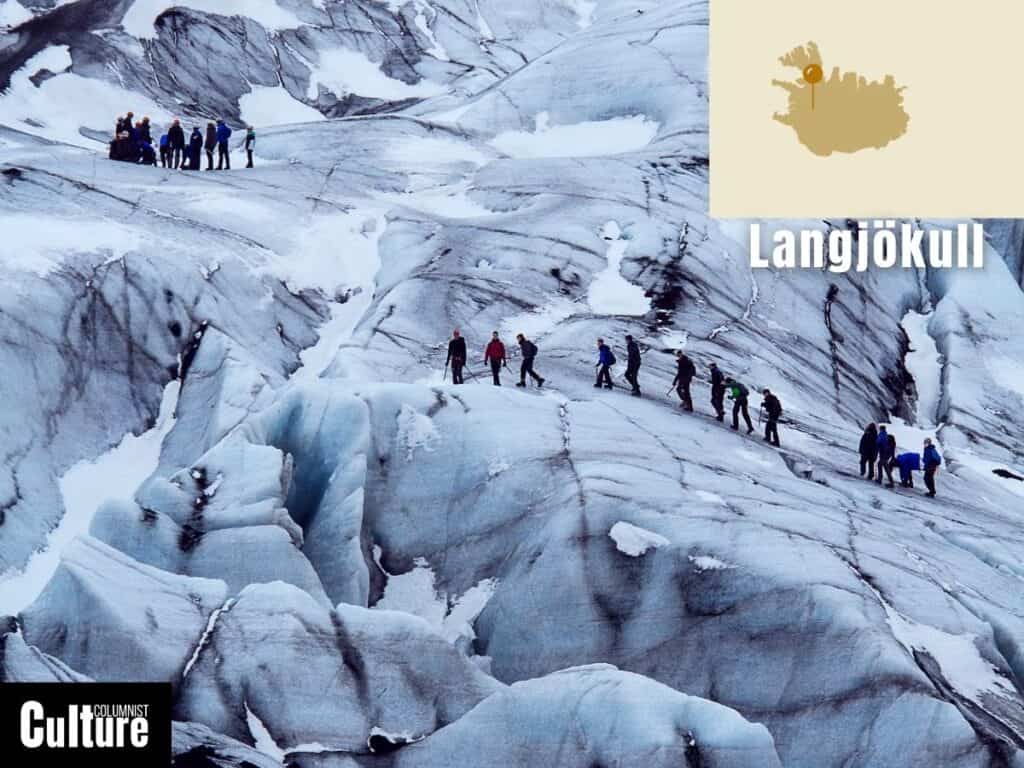
Langjökull is Iceland’s second-largest glacier and is known for its labyrinth of ice tunnels, including the largest man-made ice tunnel in the world. You can explore the glacier with snowmobiles or super jeeps specially made for traversing the icy landscape, where you can enjoy the view while driving on top of the ice cap.
Glacier d’Argentière, France
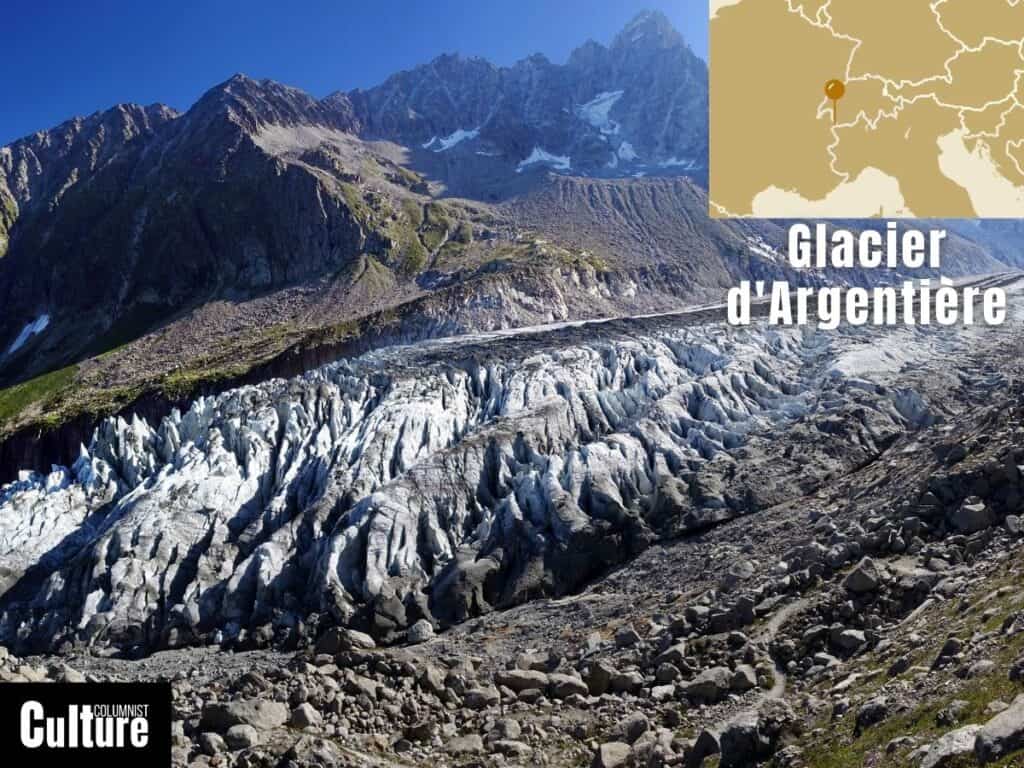
Glacier d’Argentière is in the French Alps and is one of the larger glaciers found on the northwest face of the Mont Blanc massif. The tongue of the glacier at Lognan is the most visited part of the glacier because it is not only accessible by cablecar, but it is also one of the most dramatic formations with steep walls and jagged crevices.
Aneto Glacier, Spain

Aneto Glacier, located in the Pyrenees, is one of the southernmost glaciers in Europe. Although it is relatively small compared to other European glaciers, it is Spain’s largest glacier and sits below the highest peak of the Pyrenees, Mount Aneto. Tours of the glacier are typically combined with a guided ascent to the Aneto summit in one day.
Ötztal Glacier, Austria

The Ötztal Glacier area is in the heart of Tyrol in the Austrian Alps. It consists of two primary glaciers: Tiefenbach Glacier and Rettenbach Glacier. Sölden is the main ski resort, which connects the two main glaciers through a ski tunnel. It also offers two main viewing platforms from which you can see the glaciers: the BIG3 panorama footpath at Tiefenbachkogl and the BIG3 platform at Schwarze Schneide.
Morteratsch Glacier, Switzerland

Morteratsch Glacier, located in the Swiss Engadin Valley, is one of Europe’s easiest glaciers to reach, just 50 minutes on foot from the railway station of Morteratsch. It is known for its extensive retreat in recent years, with signposts along the trail showing how much the glacier has receded. The main trail to the glacier, Gletscherpfad Morteratsch, is scenic and follows the Ova da Morteratsch river.
Rhône Glacier, Switzerland
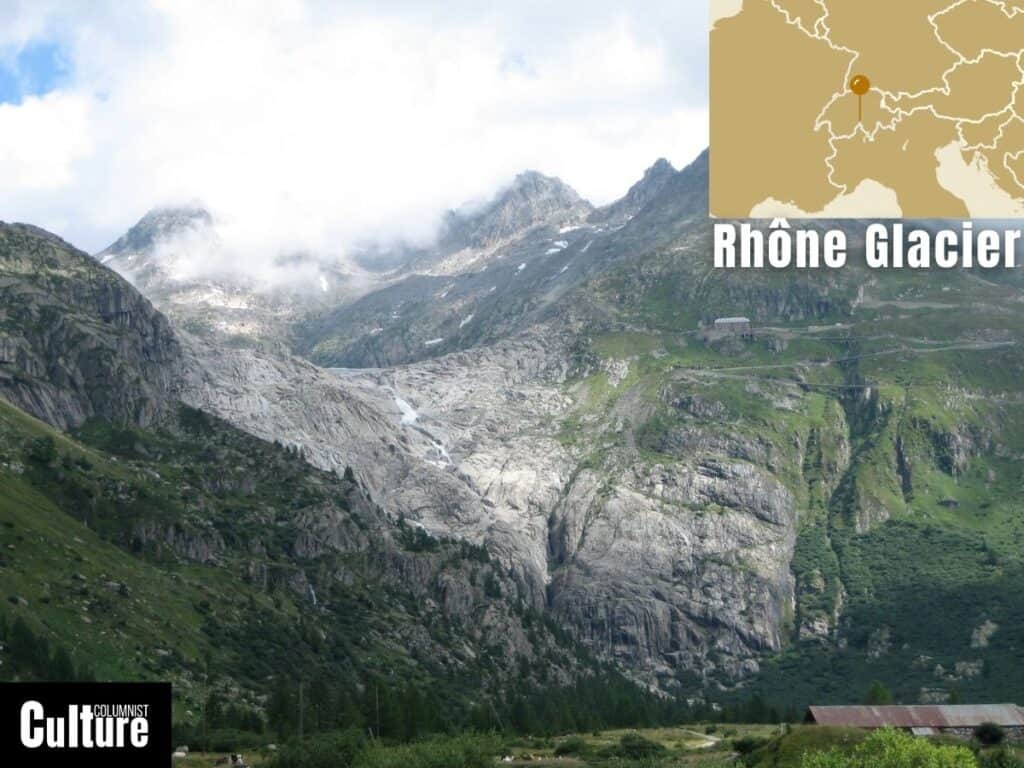
The Rhône Glacier in the Swiss Alps is the source of the Rhône River. It is particularly famous for its ice grotto, a 100-meter tunnel cut into the ice each year. Although the glacier’s exterior appears gray, the tunnel leads you inside to a small ice chamber that glows a magnificent shade of blue. The glacier is accessible by car or on foot and provides panoramic views of the Furka Pass.
Findel Glacier, Switzerland

Findel Glacier is in the Monte Rosa massif east of Zermatt in Switzerland’s Pennine Alps. It is one of the longest glaciers in the Alps, at over 13 km long. The glacier is accessible by funicular to Sunnegga and then a gondola to Blauherd, followed by a 2-mile hike through rocky meadows along the north moraine wall of the glacier. Along the way, you’ll also see impressive views of the Matterhorn behind you.
Mýrdalsjökull, Iceland
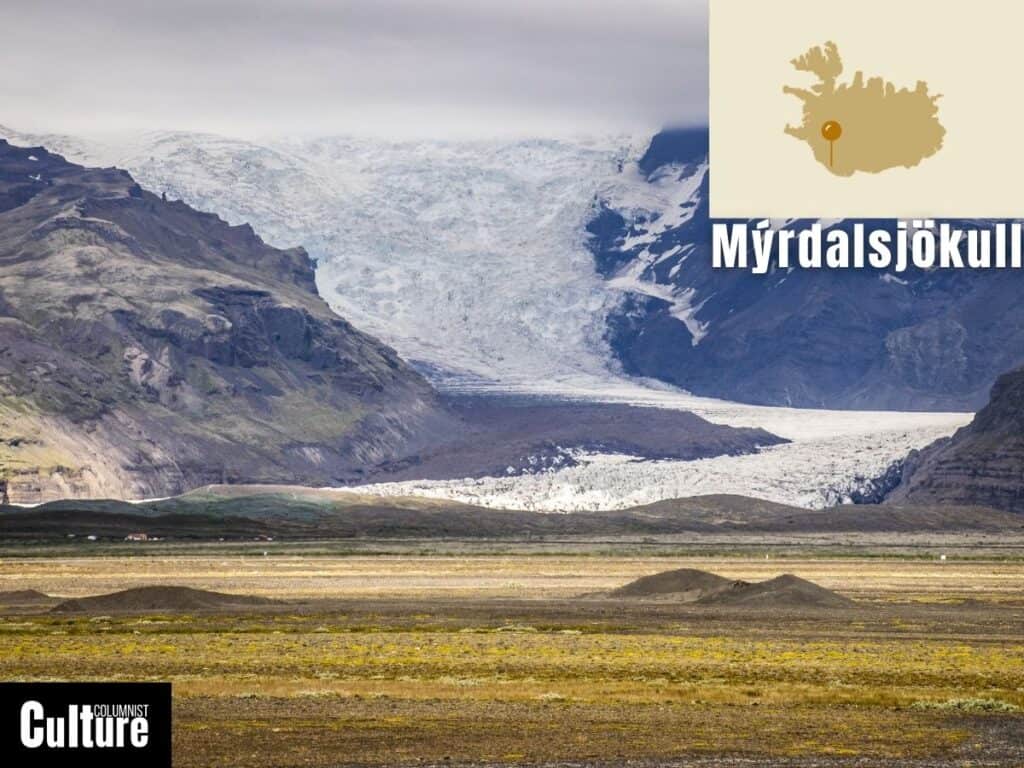
Mýrdalsjökull is Iceland’s fourth-largest ice cap and covers Katla, one of Iceland’s most active volcanoes. It is possible to snowmobile across its surface, see it from the air on a helicopter tour, or take an ice caving tour beneath it throughout the year. One of the best vantage points on the glacier, however, can be found on the Fimmvörðuháls hiking trail, between Eyjafjallajökull and Mýrdalsjökull.
Steindalsbreen, Norway
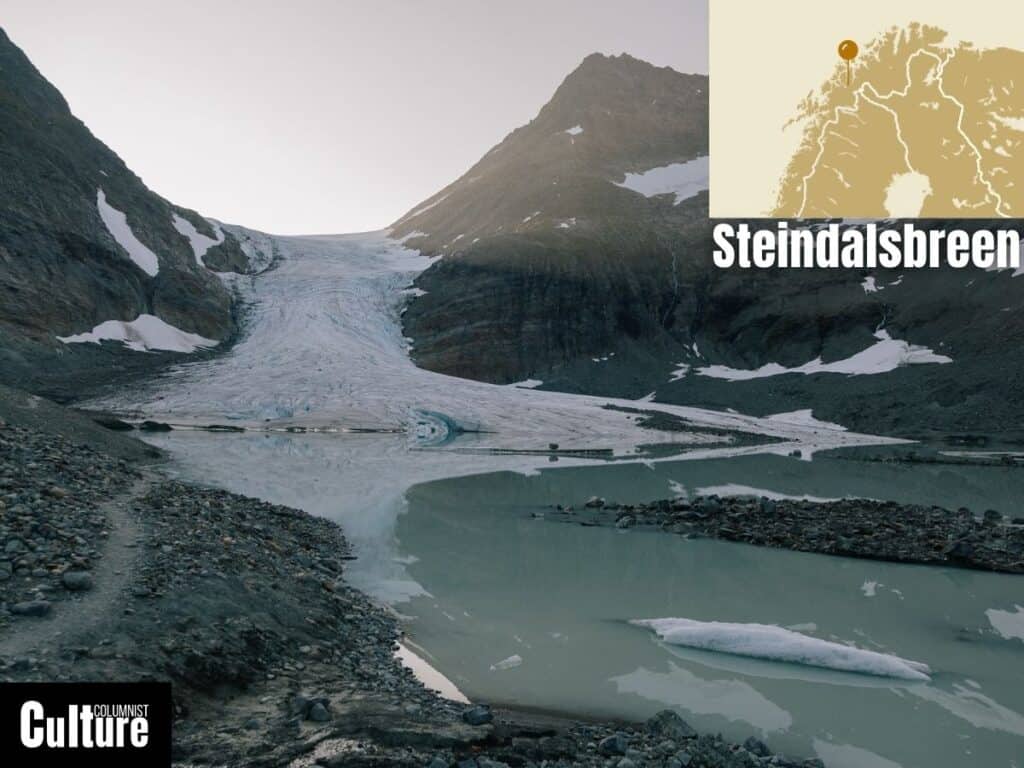
Steindalsbreen is an east-facing valley glacier in Lyngen, Norway, and can be reached from the eastern side of the Lyngen Alps. Hiking to the glacier can be done with a guided tour or on your own and is approximately 6 km long each way. The path is moderately challenging, with some steep terrain as you approach the moraine ridge. When you arrive, you’ll be met with milky blue waters from the glacier river.
Presena Glacier, Italy
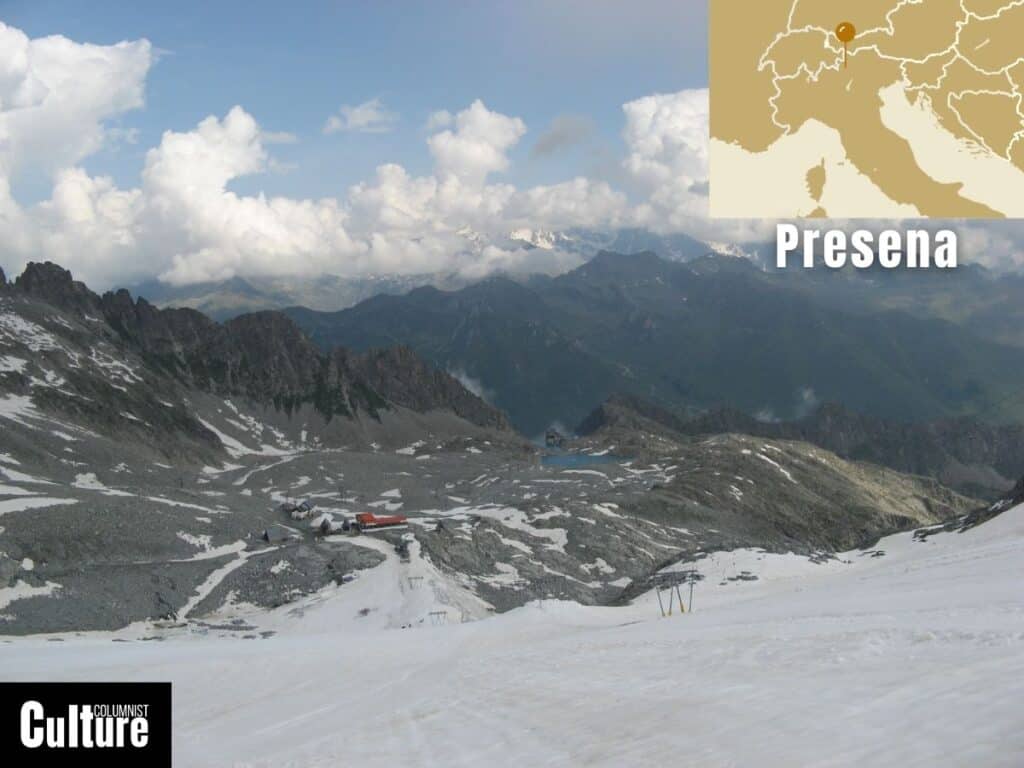
Presena Glacier is in the Italian Alps and is known for its panoramic views over the Adamello mountain range. In winter, the glacier becomes a ski resort and is home to Pista Paradiso, one of the best downhill slopes in Italy. Thanks to its northern exposure, you can ski on the glacier from November until mid-May.
Zinal Glacier, Switzerland
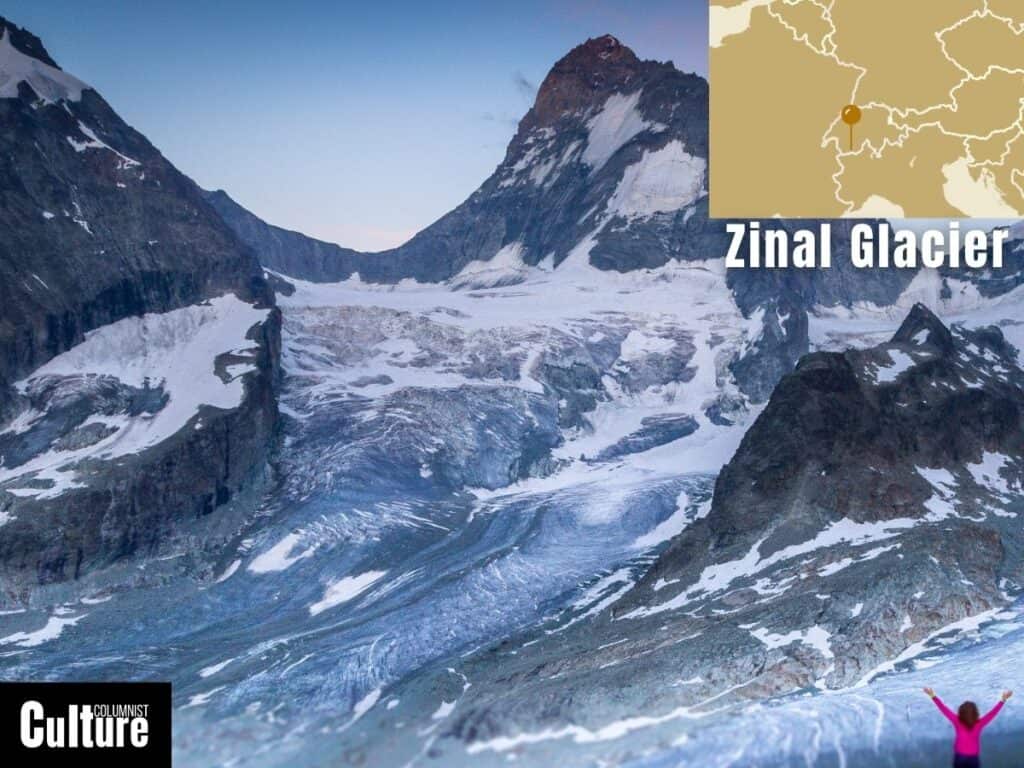
Zinal Glacier is located in the Pennine Alps of Valais, Switzerland. The glacier is formed at the junction of three other glaciers (the Grand Cornier, Durant, and Mountet) and is the source of the river La Navisence. In winter, you can enter the Zinal glacier caves that have been hollowed out by the river that flows beneath them. Trips are typically done by snowshoe and are led by an experienced guide.
Austfonna, Svalbard, Norway
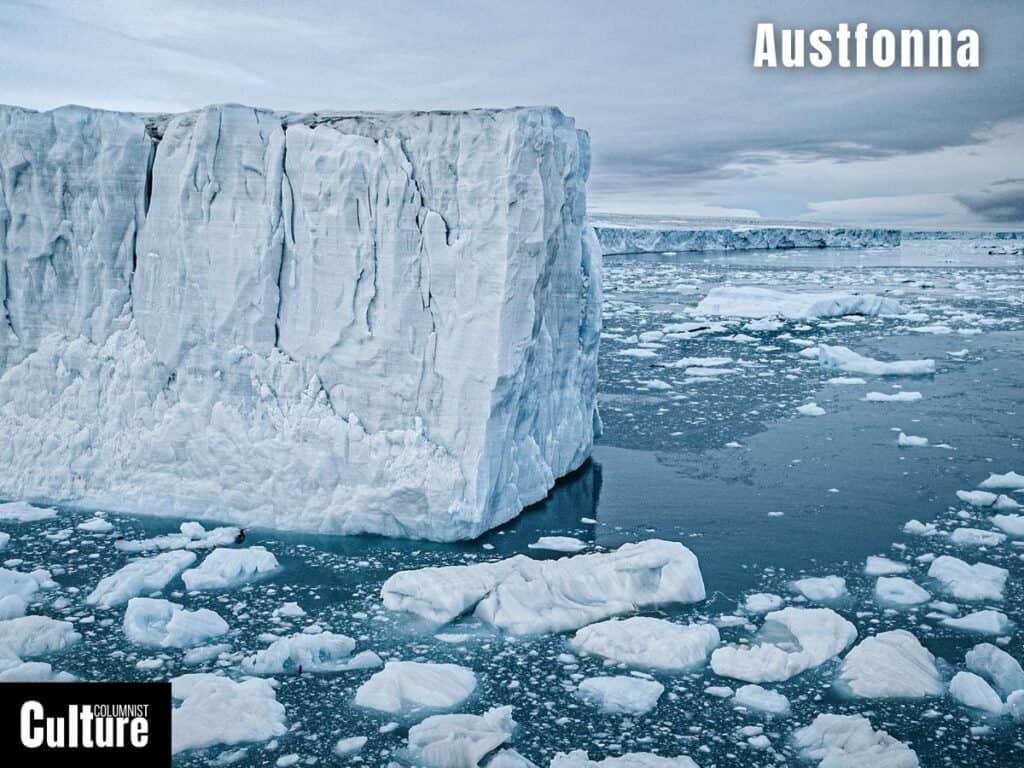
Austfonna in Svalbard, Norway, is the third-largest ice cap in the world. It is best known for its remote location in the Arctic archipelago and its giant ice cliff, Bråsvellbreen, which is 180km long and 24 meters high. Along the ice cliff, there are numerous waterfalls that tumble into the sea. Tours are typically done by ship expeditions and cruises that circumnavigate the Svalbard archipelago.
Calderone Glacier, Italy
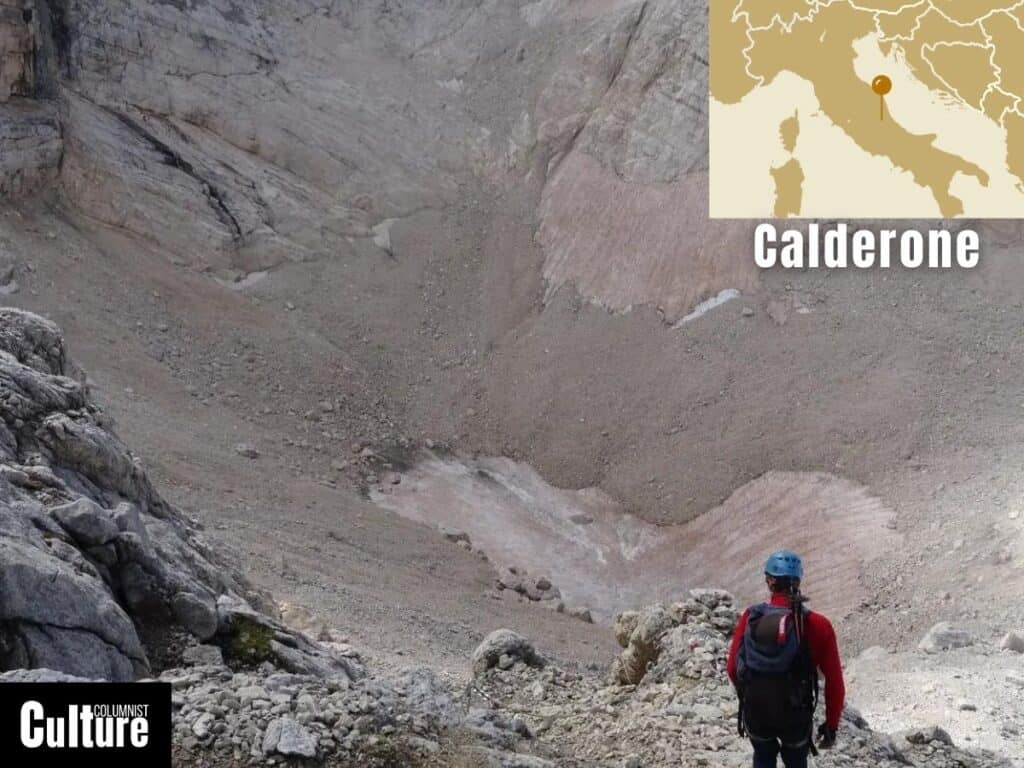
Calderone Glacier in Abruzzo, Italy, is one of the southernmost glaciers in Europe and lies just beneath Corno Grande, the highest peak in the Apennines. The glacier is at risk of disappearing if current melting rates are not curbed. Views of the glacier can be seen by taking a challenging one-day hiking trip to the summit of Corno Grande (2,912 meters).
Schneeferner, Germany

Schneeferner is Germany’s largest glacier and lies in Zugspitze, Germany’s tallest mountain. The water from the glacier feeds the River Partnach. From the end of November to mid-April the glacier offers excellent snow conditions with 22 kilometers of well-prepared pistes. In summer, hiking tours on the Zugspitze loop trail are available.
Hintertux Glacier, Austria
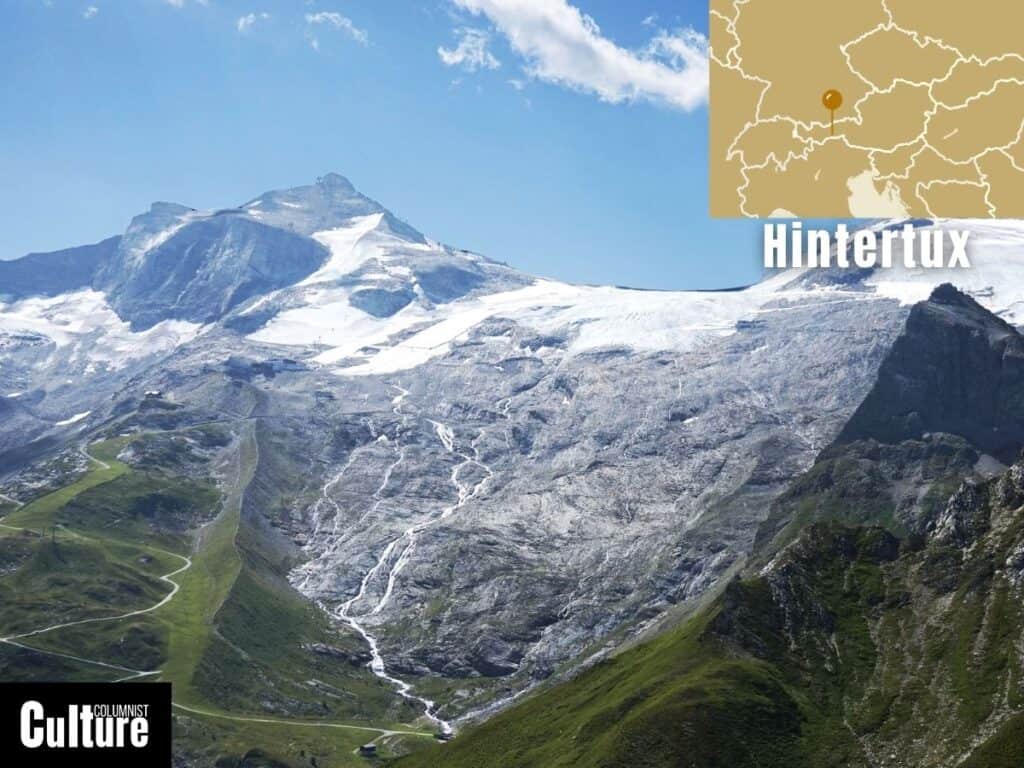
Hintertux Glacier is located in the Zillertal Alps in Austria. At 3,250 meters, it is one of the few year-round skiing destinations in Europe. The Nature’s Ice Palace at the Hintertux is an ice cave where visitors can enter beneath the ski slopes to discover a glacial cave system with ice stalactites, giant ice crystals, frozen waterfalls, and even a glacial lake.
Trift Glacier, Switzerland

Trift Glacier is located in central Switzerland and is known for its pedestrian Trift Bridge. It is one of the longest suspension bridges in the Alps, 100 meters high and 170 meters long, and provides an aerial view of the Thrift Glacier and of the lake below. The hike to the viewpoint is about 2 km and is moderately challenging with steep and rocky terrain.
Drangajökull, Iceland
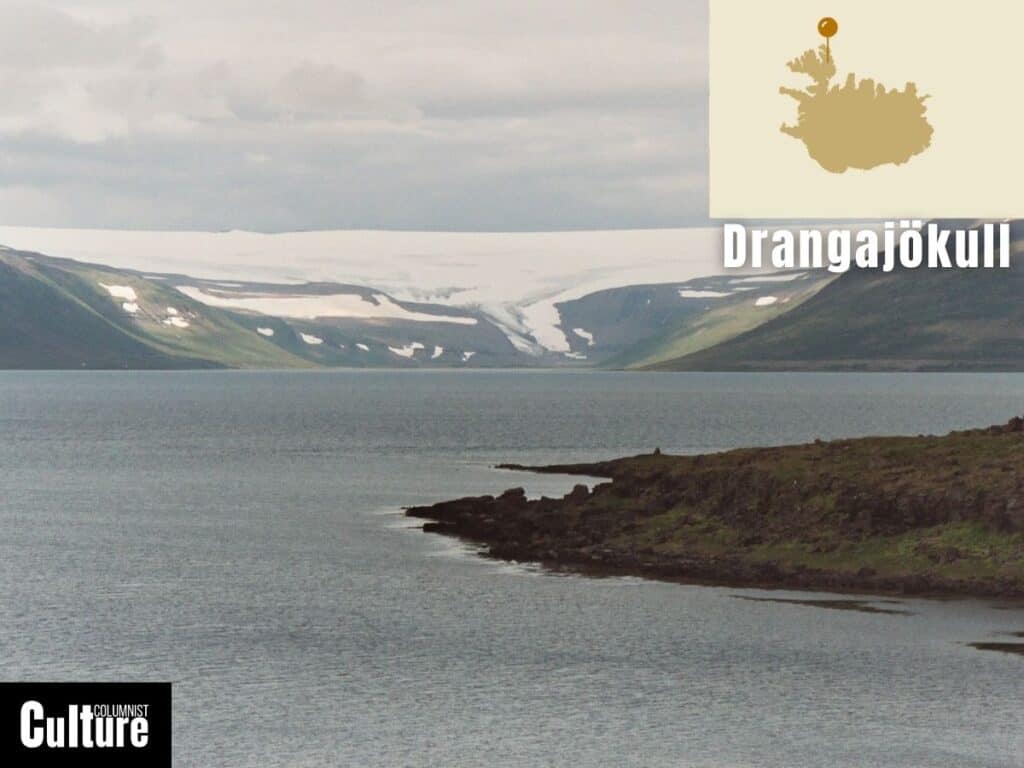
Drangajökull is located in the Westfjords of Iceland. It is the country’s northernmost and lowest-lying glacier. The glacier’s slopes are relatively mild, with its highest summit, Jökulbunga, reaching just 925 meters above sea level. Exploring the glacier is typically done by super jeep tours that operate from the nearby town of Ísafjörður.
Roseg Glacier, Switzerland
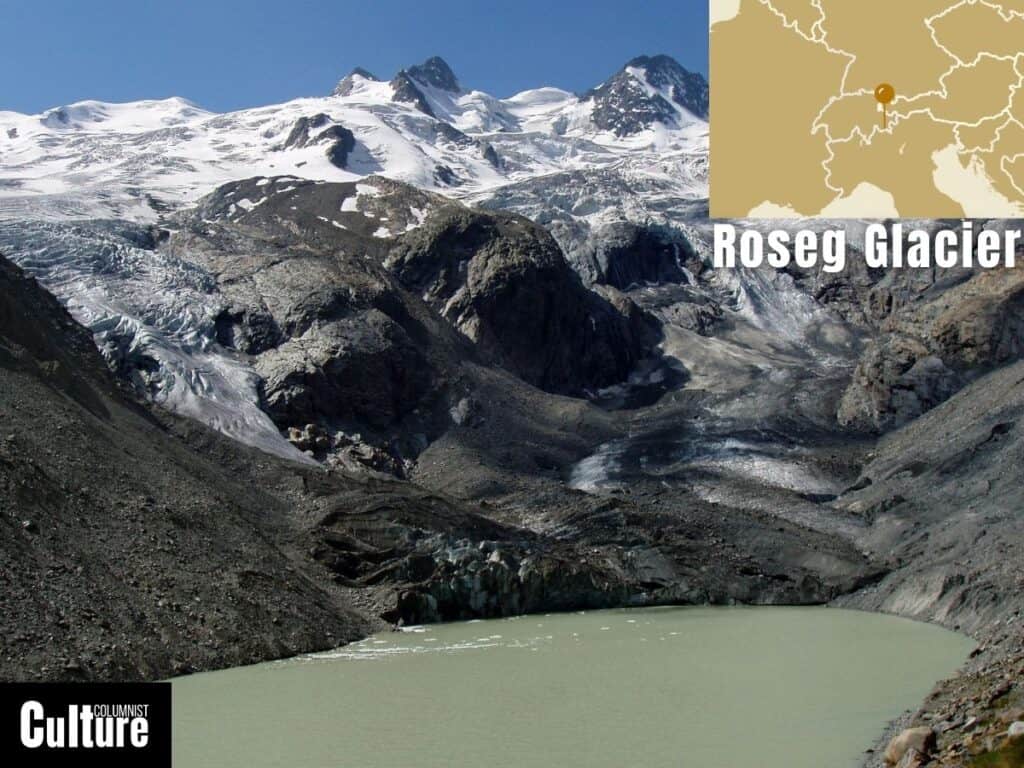
Roseg Glacier is located in the Engadin Valley in the Swiss Alps. The glacier lies below Mount Piz Glüschaint and above the milky blue Lake Vadret. Visitors can approach it via a scenic hike, horse-drawn carriage, or sleigh ride in winter. You could also opt for an aerial tour with a glacier helicopter flight that leaves from the nearby town of St. Moritz.
Schlatenkees, Austria
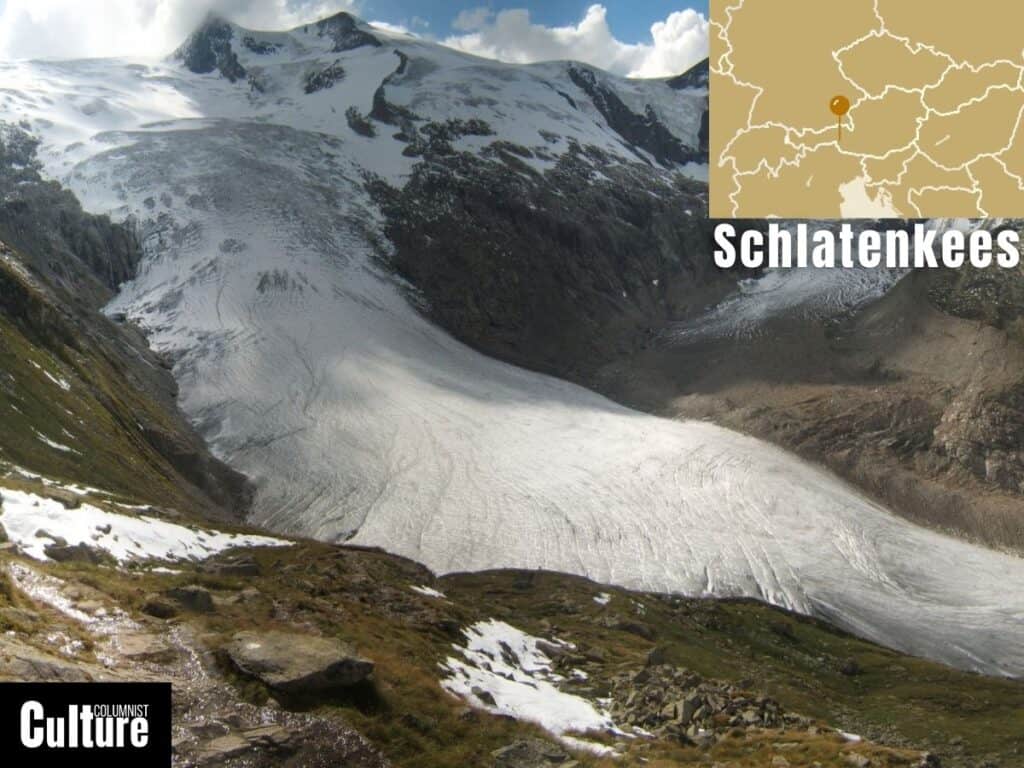
Schlatenkees Glacier is located in the High Tauern National Park in East Tyrol, Austria. It is thought to be one of the country’s fastest-melting glaciers. You can reach the glacier by taking the Inngergschlöss glacier trail with or without a guide in the Gschlöss valley. The 9.4-kilometer trail (5.8 miles) takes approximately five hours and passes the lakes of Salzbodensee and “Eye of God” along the way.
Where can you see icebergs in Europe?
In Europe, icebergs are most commonly seen around the coasts of Iceland and Greenland, both of which are known for their proximity to the Arctic Circle and their abundance of glaciers. Jökulsárlón in Iceland is one famous spot. This glacial lagoon, formed by the retreat of the Vatnajökull Glacier, is home to a spectacular collection of icebergs drifting quietly in the sea.
Greenland, on the other hand, provides even more opportunities to see icebergs up close. Ilulissat Icefjord, a UNESCO World Heritage Site in Disko Bay on the southern coast of Greenland, contains massive icebergs that break off from the Jakobshavn Glacier and float out into the water. The town of Ilulissat, aptly translating to “iceberg,” offers a vantage point for viewing and photographing the frozen landscapes that define much of the European terrain in the far north.
Which European country has the most glaciers?
Norway has the most glaciers in Europe; they cover 0.7% of the Norwegian mainland, with a total of 2,500 glaciers of different shapes and sizes. Switzerland has the most glaciers in the Alps, with about 1400 named glaciers covering a total area of around 961.4 sq km, or about half of all glaciers in the European Alps.
The Bernese alps, the Central Swiss alps, and the Valais alps are the mountain ranges where most Swiss glaciers are located. The Swiss Glacier Monitoring Network constantly watches and measures these glaciers each year to monitor their size for signs of retreat and updates the number of glaciers each year accordingly.
Are glaciers in the Alps retreating?
The area cover of glaciers in the Alps has declined sharply over the last 20 years, according to the Glacial Index published by the Journal of Glaciology in 2023. Global warming has raised temperatures, causing a significant amount of glacier melt. The retreat is further evidenced by the number and size of glacial lakes that are fed by meltwater from eroding glaciers.
What is the largest alpine lake in Europe?
Lake Geneva, also known as Lac Léman, is Europe’s biggest alpine lake, with a surface area of around 580 square kilometers and a depth of 310 meters. Shaped like a crescent, the lake is about 72 km long and varies in width from about 2.4 to 13 km, making it the 23rd largest European lake and the largest lake in the Alps.

